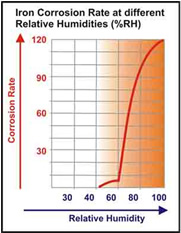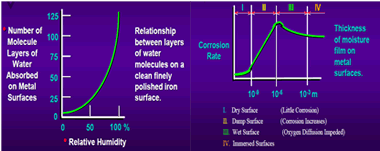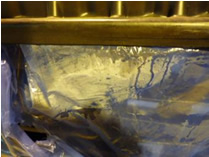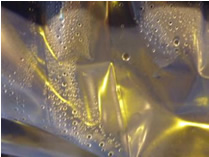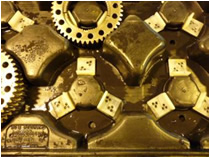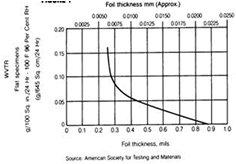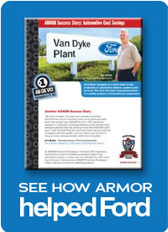 |
||
 |
||
|
FOUR WATER SOURCES IN PACKAGING APPLICATIONS AND HOW TO MINIMIZE THEIR IMPACT By Fernando Longinotti, International Sales Manager, Armor Protective Packaging® In the June and July ARMOR SENTINEL, the Corrosion College article featured issues surrounding temperature and humidity fluctuations during overseas shipments. In this month’s article we look at how to minimize the presence and impact of water (moisture) in packaging. Millions of dollars are lost due to corrosion of metal parts during transportation, with moisture attributed as the major cause. This moisture makes its way into the packaging by different means and negatively synergizes with the metal while in transit. Common solutions to help with moisture problems include packaging barriers such as poly films. Typical packaging barriers (like poly films) are produced from low and high-density polyethylene resins, which are amorphous polymers, and create a partially closed net that allow gases (oxygen) and vapors (moisture) to get through. This is why poly films are not completely air-tight. If moisture finds its way into a poly bag, that presence of moisture can lead to a corrosion problem.
Corrosion rates are impacted by several factors:
Relative humidity (RH) affects the amount of absorbed water on the metal surface and when relative humidity surpasses critical relative humidity, corrosion will occur. Another important role is played by salt deposition. When salt is deposited, it produces deliquescence and increased corrosion rate. As shown on the Iron Corrosion Rate at Different Relative Humidities graph (show above), corrosion is slowed significantly when RH is below 50%. In contrast, short-term corrosion reactions (flash rust) begin at 60% RH. Corrosion problems arise when moisture is allowed to enter into the packaging (such as a poly bag) unimpeded by the film, such as through an incorrect closure or a significant hole in the bag. An unimpeded airflow into the bag is what must absolutely be avoided.
Properly inserting metal parts in the correct packaging is crucial. Even if no mistake has been made at the moment of closing the packaging, there are still four different ways by which water as vapor can come in contact with the metal parts. This added amount of water will combine and synergize to make things worse. Outlined below are the four sources of water and how to minimize their impact: Water Source # 1: Air inside the package Cause:
Notice the streams of water trapped inside the packaging due to humidity within the packaging.
Condensation and moisture grow when warm air is sealed and contained in the packaging.
Rust forms quickly when metal parts on not protected properly. Solution: b) Use desiccant to lower the dew point and avoid condensation during transportation. Water Source # 2: Materials inside the package Cause: Solution: b) If wood or corrugated are needed for structural support, wrap them in VCI materials to separate them from the metal. If possible, utilize plastic materials such as plastic corrugated or other inert packaging. Water Source # 3: Walls of the package Cause: Solution: Water Source # 4: Permeation of water through the poly film
Cause: This chart above demonstrates that 4 MIL thickness is the breaking point on poly film. If a low thickness poly film is used on an international shipment, there is a greater chance that a significant amount of water will enter the interior of the bag through the film. Solution: b) Tape it or heat seal the bag closure properly. Barrier products such as ARMOR's Defender™ or Crusader™ film will help to isolate metal parts and protect from humidity exposure. For additional information on international shipment and packaging options, visit the ARMOR website or contact your ARMOR sales representative. |
